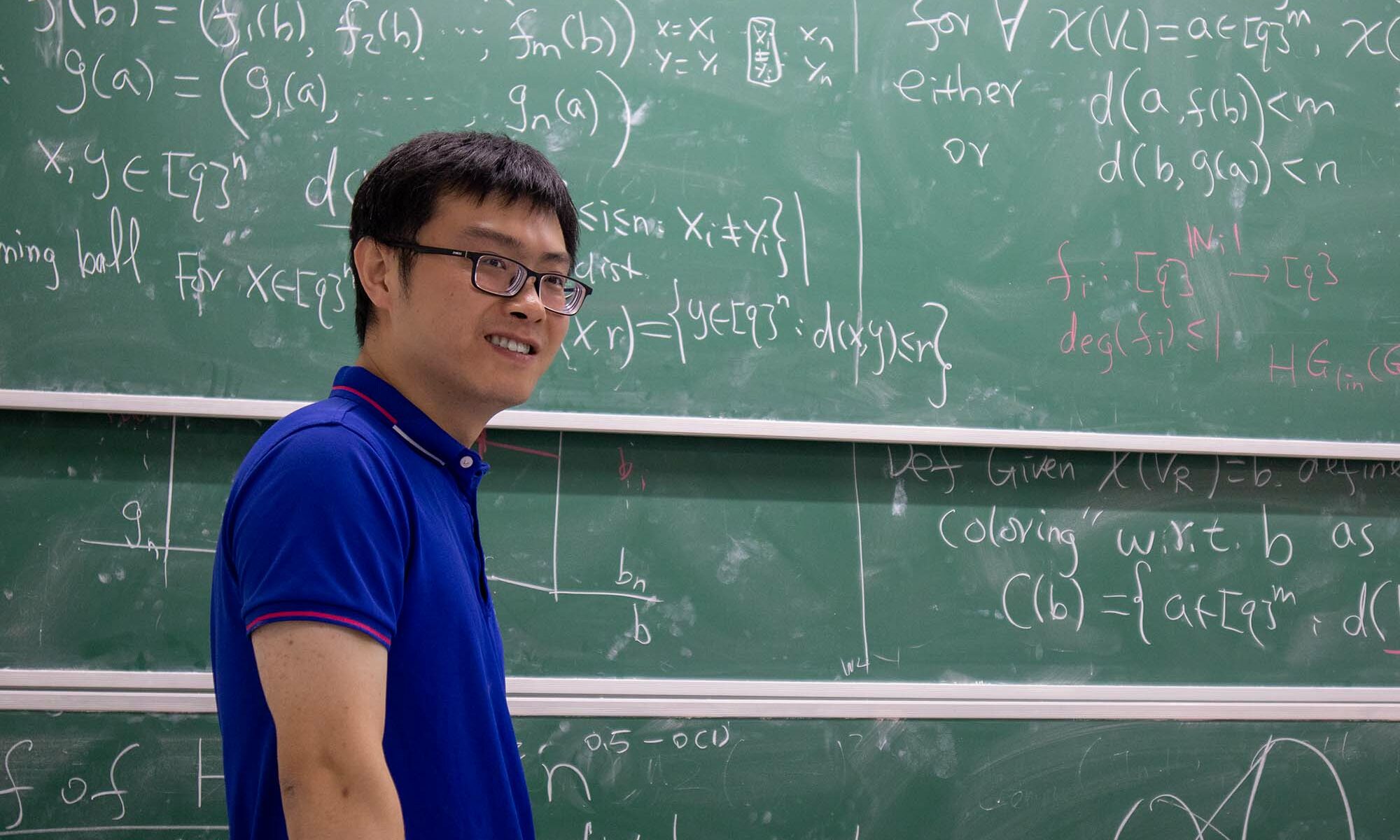On June 27, 2023, Chong Shangguan (上官冲) from Shandong University gave a talk at the Discrete Math Seminar on the maximum number of colors of hats so that at least one of the players can correctly guess his or her hat color while only seeing the colors of their neighbors on a graph. The title of his talk was “the hat guessing number of graphs.”
Chong Shangguan (上官冲), The hat guessing number of graphs
Consider the following hat guessing game: $n$ players are placed on $n$ vertices of a graph, each wearing a hat whose color is arbitrarily chosen from a set of $q$ possible colors. Each player can see the hat colors of his neighbors, but not his own hat color. All of the players are asked to guess their own hat colors simultaneously, according to a predetermined guessing strategy and the hat colors they see, where no communication between them is allowed. Given a graph $G$, its hat guessing number $HG(G)$ is the largest integer $q$ such that there exists a guessing strategy guaranteeing at least one correct guess for any hat assignment of $q$ possible colors.
In 2008, Butler, Hajiaghayi, Kleinberg, and Leighton asked whether the hat guessing number of the complete bipartite graph $K_{n,n}$ is at least some fixed positive (fractional) power of $n$. We answer this question affirmatively, showing that for sufficiently large $n$, $HG(K_{n,n})\ge n^{0.5-o(1)}$. Our guessing strategy is based on some ideas from coding theory and probabilistic method.
Based on a joint work with Noga Alon, Omri Ben-Eliezer, and Itzhak Tamo.
Welcome Chong Shangguan and Yisai Xue, long-term visitors to ECOPRO
The IBS Discrete Mathematics Group welcomes Chong Shangguan and Yisai Xue, two long-term visitors to ECOPRO group.

Chong Shangguan (上官冲) is a professor at Shandong University and will stay with us for 3 months.

Yisai Xue is a graduate student at Shanghai University and will stay with us for 1 year.
Chong Shangguan (上官冲), On the sparse hypergraph problem of Brown, Erdős and Sós
For fixed integers $r\ge 3, e\ge 3$, and $v\ge r+1$, let $f_r(n,v,e)$ denote the maximum number of edges in an $n$-vertex $r$-uniform hypergraph in which the union of arbitrary $e$ distinct edges contains at least $v+1$ vertices. In 1973, Brown, Erdős and Sós initiated the study of the function $f_r(n,v,e)$ and they proved that $\Omega(n^{\frac{er-v}{e-1}})=f_r(n,v,e)=O(n^{\lceil\frac{er-v}{e-1}\rceil})$. We will survey the state-of-art results about the study of $f_r(n,er-(e-1)k+1,e)$ and $f_r(n,er-(e-1)k,e)$, where $r>k\ge 2$ and $e\ge 3$. Although these two functions have been extensively studied, many interesting questions remain open.



